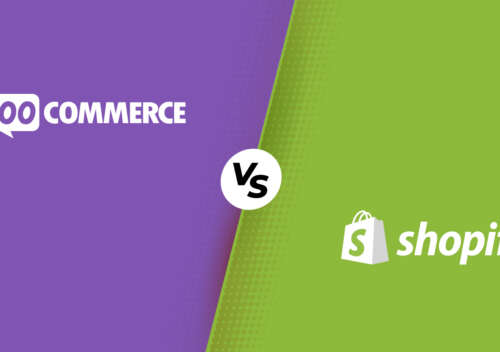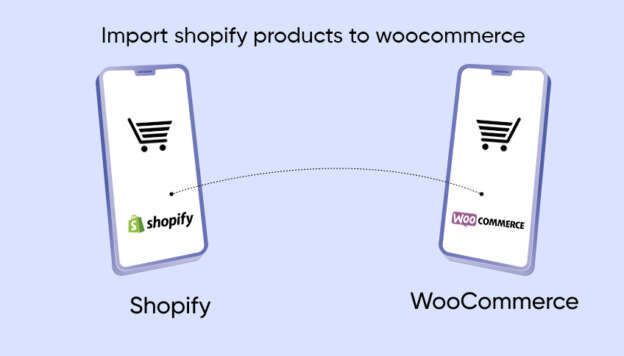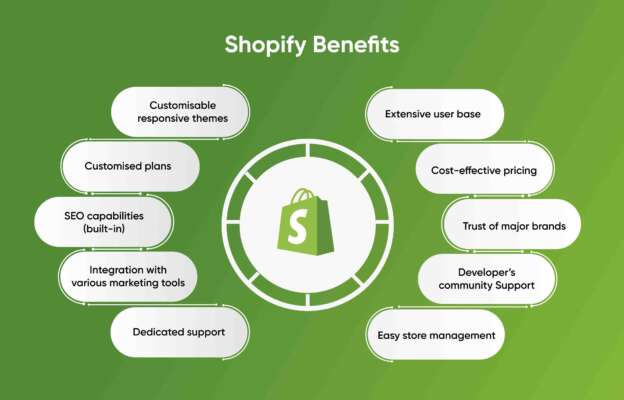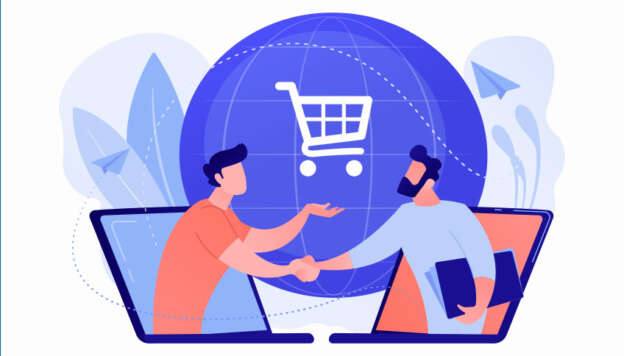Shopify dropshipping is essential for getting your eCommerce store recognised among the audience. Here is an account on how to perform the same.
Everything Explained on Shopify Dropshipping
Starting a successful ecommerce venture demands significant resources. But what if you lack coding expertise and a substantial inventory budget? Consider Enter Shopify dropshipping, when choosing Shopify development services. Shopify’s user-friendly platform is a dream come true for dropshippers. It allows you to set up a professional online store without needing to code. By partnering with suppliers who handle inventory and shipping, you can focus on marketing and growing your business. Shopify’s integrated tools and seamless process make it possible to run a profitable online store with minimal overhead and hassle.
Before we get into the ins and outs of Dropshipping, let’s understand more about it in detail
What is Dropshpping?
Dropshipping is an innovative ecommerce model where entrepreneurs sell products through an online store without managing inventory or fulfilling orders themselves. Instead, a separate supplier handles these tasks. In a Shopify dropshipping setup, an entrepreneur sets up a Shopify storefront and partners with a dropshipping supplier to handle packaging and shipping.
This model has become highly lucrative for independent creators and ecommerce entrepreneurs. By eliminating the need for wholesale inventory and complex inventory management, dropshippers can significantly reduce costs and streamline operations. With the right partner, entrepreneurs can expand their reach, selling products internationally with ease.
For example, partnering with a dropshipping supplier allows Shopify store owners to utilize print on demand services. This approach enables entrepreneurs to focus on growing their business while offering high-quality, custom products to a global customer base.
How to Dropship on Shopify: Explaining the Step-by-Step Procedure
Searching answers for how to dropshit on Shopify? Let us tell you, starting a dropshipping business on Shopify has never been easier! With these eight simple steps, you can confidently develop a unique business idea, launch a custom product storefront, and partner with a print-on-demand provider to streamline order fulfilment. Here’s a guide to kickstart your Shopify dropshipping business, along with best practices to maximise your profit:
Step 1: Choosing dropshipping product line
Every Shopify dropshipping website needs a compelling line of products to sell, but identifying what customers want can be challenging. The key is to start by selecting a niche—a specific segment of a larger market with shared preferences or interests, such as avid gamers, pet owners, or fitness enthusiasts.
To find a profitable niche, begin with your interests. Make a list of things you’re passionate about, like calligraphy or custom apparel. Next, conduct thorough market research to gauge consumer interest in related products. Utilize channels such as social media, Google Search, and Google Trends to identify profitable niches and top-selling products within those niches.
After choosing your niche, it’s essential to analyse your competitors. Since you’ll share a target audience with them, understanding the products and designs they offer is crucial. This analysis will help you differentiate your product line and offer unique items that stand out in the market.
Step 2: Creating a Shopify Account
With your niche and product line decided, it’s time to solidify your dropshipping store by creating a Shopify account. You can either get Shopify Development Services or chose to do the job yourself If you prefer to dip your toes in before fully committing, Shopify offers a 14-day free trial. However, given its reputation as a leading ecommerce platform, you’ll likely be convinced of its value soon after starting your trial, especially when you experience how easy it is to start dropshipping.
Once you’re ready to proceed, selecting a pricing plan is crucial. Shopify offers three plans, each designed to suit different needs and budgets. The Basic plan, the most affordable, includes simple reports and two staff accounts. The Advanced plan, the most expensive, offers a custom report builder and up to 15 staff accounts, making it ideal for more established ecommerce businesses.
By choosing the plan that best fits your current requirements and budget, you can set a solid foundation for your Shopify dropshipping business and start building your online store with confidence.
Step 3: Select a Print on Demand Supplier
While a visually appealing website is essential, a Shopify store is incomplete without a reliable dropshipping supplier to fulfill customer orders. As you search for suppliers, consider the benefits of print-on-demand (POD) providers. POD operates similarly to dropshipping, with inventory purchased per order, and the supplier handling printing, packaging, and shipping.
POD providers offer advantages beyond traditional dropshipping. They eliminate inventory management and related costs while also allowing for custom designs on products, making them unique. Additionally, a POD provider with a global network can simplify operations by replacing multiple suppliers and ensuring products can be produced and delivered worldwide.
By partnering with a reputable POD provider, you can enhance your Shopify dropshipping business, offering customers unique products while streamlining your supply chain and expanding your market reach.
Step 4: Design Your Products
Designing your product line is a crucial step in creating a successful dropshipping store. For professional-looking designs, consider hiring a graphic designer.
If you prefer a hands-on approach, software like Adobe Illustrator or Canva can also help you create custom designs. These tools offer a wide range of features and templates to bring your ideas to life. Whichever method you choose, investing time and effort into your product designs can set your dropshipping store apart and attract more customers.
Step 5: Customise the Shopify Store
Once you’ve finalised your trending products for sale online, it’s time to customise your Shopify storefront. Setting your Shopify dropshipping business apart from others begins with choosing a store name that’s simple, memorable, and relevant to your niche. Your store name, along with your logo, should convey your brand’s personality and resonate with your target audience.
Utilise Shopify’s free and paid themes to customize your storefront to align with your brand. Shopify’s theme editor offers a wide range of customization options, allowing you to experiment with fonts, colours, buttons, and more. Ensure that the look of your online store complements your product line by using the same colour palette and design style.
By investing time in customizing your Shopify storefront with Shopify Development Services, you can create a unique and visually appealing online shopping experience that reflects your brand and attracts customers.
Step 6: Add Products to Store
Now that your storefront is ready for customers, it’s time to prepare compelling product listings. High-quality photos are essential, so take multiple images that showcase the color and vibrancy of your products. Ensure your photos are taken in well-lit areas with simple backgrounds. For apparel and other wearable items, include photos of a model wearing each item to give customers a better sense of how the product looks when worn.
Craft detailed product descriptions that highlight the material, dimensions, and unique features of your products. Explain why customers need your products and how they can benefit from them. Use relevant keywords in your product titles and descriptions to optimize them for search engines. For example, instead of a generic title like “Tank Top,” use “Red Women’s Tank Top” to increase visibility in search results.
Integrate your chosen print-on-demand provider with your Shopify store to streamline order fulfillment. This integration ensures that incoming orders are automatically sent to your POD supplier for processing and shipping. If you need assistance with this process, consult Shopify’s online
By following these steps, you can create compelling product listings that attract customers and drive sales on your Shopify dropshipping website.
Step 7: Launch and Manage Your Online Store
With your products ready for purchase, you’re on the brink of launching your ecommerce business! The final steps include setting up payment and shipping options in Shopify’s settings. Once these are configured, create a clear refund policy for customers who may need to exchange or return items.
After your launch, prioritize providing excellent customer support to enhance the shopping experience. Monitor your Shopify dashboard regularly to analyze your business performance. Keep track of metrics such as conversion rate, sales revenue, average order value, and customer lifetime value. Use this data to make informed decisions and adjustments to your business strategy as needed.
By focusing on these key areas, you can successfully launch and manage your Shopify dropshipping store, setting the stage for long-term success in the ecommerce world.
Step 8: Market Your Dropshipping Store
Scaling your Shopify dropshipping business requires an effective marketing strategy. There are numerous tactics to consider, starting with paid advertising across various sales channels such as Google, Facebook, and Instagram. These platforms offer targeted advertising options to reach your ideal audience and drive traffic to your store.
Social media marketing is another powerful tool for building brand awareness and engaging with potential customers. Use your social media platforms to create compelling content that showcases your products and encourages interaction with your audience.
Email marketing is a valuable strategy for Shopify dropshippers. Build an email list of current and potential customers and use it to inform them about upcoming promotions, limited-time discounts, and product launches. Shopify store owners can easily create email campaigns using ready-made designs within Shopify Email.
Incorporating influencer marketing into your strategy can also drive traffic to your Shopify store. Partner with influencers who align with your niche to promote your products to their audience. This can help you reach a larger and more targeted audience, increasing your chances of driving sales.
By implementing these marketing strategies, you can effectively scale your Shopify dropshipping business and reach new customers.
In Conclusion
Shopify dropshipping offers a lucrative opportunity for entrepreneurs to start and scale their ecommerce businesses with minimal upfront investment. By selecting a niche, designing a compelling product line, and optimizing your Shopify storefront, you can attract customers and drive sales.
Leveraging print on demand services, effective marketing strategies, and continuous monitoring of key metrics can help you grow your business and achieve long-term success in the competitive ecommerce landscape. With the right approach and dedication, Shopify dropshipping can be a rewarding venture for aspiring online entrepreneurs. Added to that continued Shopify Maintenance Services helps to keep the site up-to-date.













